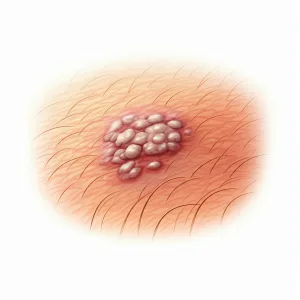
Ringworm, often termed as tinea, is a common fungal infection caused by fungi such as Trichophyton, Microsporum, and Epidermophyton. Contrary to the wide belief, it is not caused by a worm. The infection can affect majorly the scalp, skin, and nails. At times, fungal infections can be severe and affect the body badly. As humans are naturally beauty-conscious about their exposed body parts, skin infections can significantly impact mental health as well.
Tinea capitis occurs on the scalp. It is very contagious and usually more common in children than in adults. Tinea corporis occurs on the skin, so any part of the body can be infected, including the face, but it is more common in skin folds. It is prevalent in warmer climates. Tinea cruris, another type occurring in the groin area, is often called jock itch. This condition is more common in men and rare in women, often occurring in warm weather. Tinea barbae develops on the cheeks, chin, and upper neck, usually in bearded areas. These spots may become crusted over or filled with pus. Tinea unguium, or onychomycosis, is a common type of fungal infection affecting toenails and sometimes fingernails, causing thickened, deformed, and discolored nails that can break easily. This infection can spread to the adjacent skin around the nails, typically through a small cut. Tinea pedis, often referred to as athlete’s foot, occurs on the feet and between the toes. It may be caused by sweating, wetting the feet after swimming or bathing, wearing tight socks and shoes, and warm weather. Infections on the foot or between the toes are common, especially with nail infections.

Causes and Disease Transmission
Ringworm transmits through skin-to-skin contact with people or animals infected with the fungus. It can also spread by sharing clothes, towels, soaps, or footwear used by the affected person and through shared rooms or spaces with the infected.


Symptoms and Signs
Symptoms can differ slightly depending on the infected body part, usually manifesting between four to 14 days after exposure to the fungi causing the disease.

Skin Symptoms:
- Appear red on white skin and red-purple or brown, gray, or black on brown skin.
- Itchy ring-shaped rashes.
- Slightly inflammatory.
- Clear or scaly area inside the ring.
- Scattered bumps inside the ring.
Feet Symptoms:
- Red, swollen, peeling, itchy skin between the toes.
- Common in the pinkie toe and adjacent areas.
- Can affect the sole and heel of the foot; in severe cases, it can spread to blisters.
Groin Symptoms:
- Itchy, scaly, red spots often found in the skin folds of the thighs.
Scalp Symptoms:
- Scaly, itchy, circular, red bald spots that may grow larger if untreated.
Nails Symptoms:
- Discolored, thick nails that are easily breakable.
- Nails may become separated from the nail bed.
Remedy: Do’s and Don’ts
It is strongly advised not to use ointments and skin creams containing steroids or corticosteroids for undiagnosed ringworm rashes, as steroids can often worsen the condition. Some allopathic doctors may prescribe medications containing steroids, which can create adverse effects on the body, depending on the person being treated.

Homoeopathic medicine is harmless to our body and effective for treating various types of tinea. Fixtine is a homeopathic medicine that heals fungal infections in any part of the body by working from within. Homeopathic remedies act on the body by enhancing the body’s innate healing capacity. They enable our body to combat diseases organically. According to homeopathy ideals, symptoms are manifestations of internal imbalance, which should be addressed by stimulating the innate defense mechanism that gradually heals tinea diseases. Hence, homeopathy typically does not produce side effects. The course of treatment is of short duration and can help you recover without resorting to longer or more expensive treatments.


